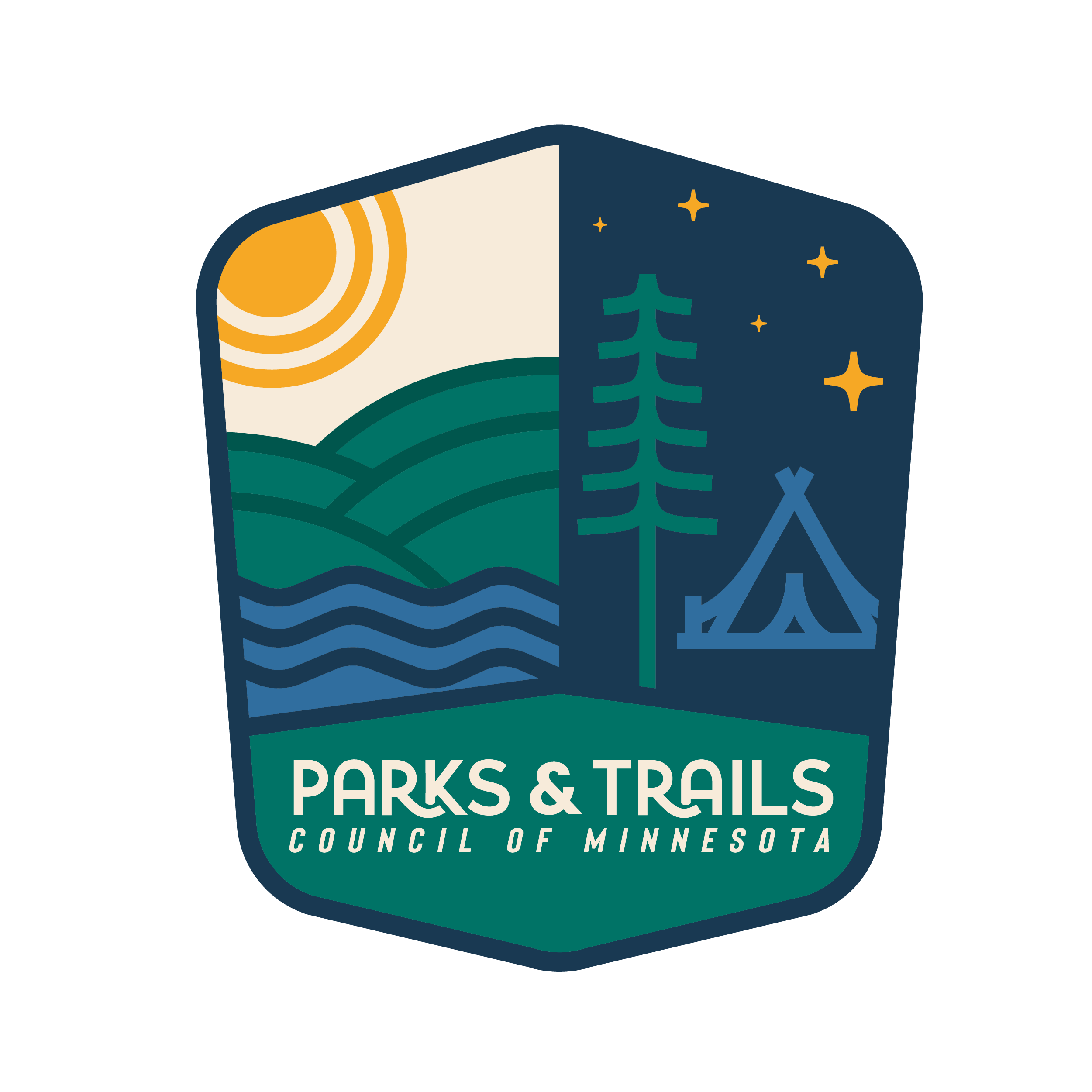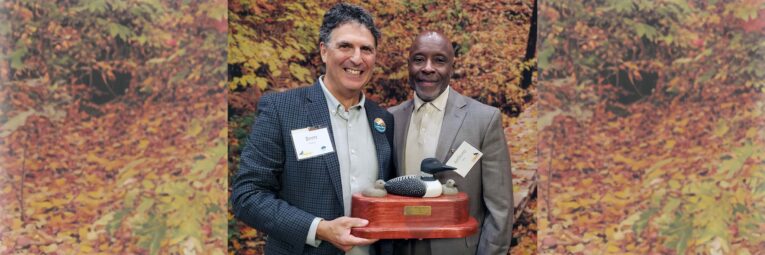
Anthony Taylor’s speech
Parks & Trails Council 2023 Reuel Harmon Award was presented to Anthony Taylor during our Annual Dinner. Here is the full acceptance speech Anthony delivered at the dinner.
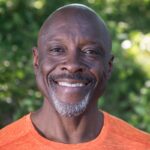
Anthony Taylor
“Good evening, friends, family, and fellow advocates. I am deeply humbled and profoundly grateful to be named by you for The Reuel Harmon Award in recognition of “exemplary service and outstanding achievements on behalf of Minnesota’s parks and trails.” I value this work because my work is on behalf of people, supporting communities of color, with a focus on African communities, to realize the benefits of our inherent relationship to nature – in these amazing places you fight to preserve – Minnesota’s parks and trails.
We share a commitment to make nature safe and accessible to everyone. Nature is a testament to the beauty of resilience, diversity, and interconnection. And this interconnectedness is the ultimate nurturer, ever patient, ever giving, ever renewing.
Drawing upon the wisdom of remarkable voices of those acknowledged before me, from elders and ancestors, and the lessons from the world around us, let this award be not just an acknowledgment of my past deeds but a call to action. Let’s cherish the diversity in our company, champion the voices that have long been silenced, and remember that in nature and in ourselves, there is a profound beauty waiting to be discovered, celebrated, and protected. This award is not just for me – it is a testament to a legacy, a lineage of resilience, connection, and advocacy that threads through our history.
The African American relationship with nature is as deep and complex as the roots of the oldest tree. It is a relationship forged in the fields and plantations under the cruel sun of oppression but also whispered in the wind along the trails of the Underground Railroad. Our ancestors found solace in nature’s embrace, and in its vastness, they saw a reflection of their own enduring spirit. The outdoors has been a refuge, a place of reflection, and a realm of resistance. But this is not the story.
The stories we tell, the narratives we construct, are more than mere recounts of events or imaginative tales. They are, in essence, the blueprint of our understanding, the compass by which we navigate the complexities of our world. Today, I wish to impress upon you a simple yet profound idea: the narrative we create directly influences the solutions we conceive.
Every narrative has its parameters, its heroes and villains, its conflicts and resolutions. These elements, in turn, shape our perceptions, attitudes, and beliefs. They determine what we see as ‘possible’ and what we dismiss as ‘improbable’ or ‘impossible. In the social realm, narratives play an equally pivotal role. Think of issues related to gender, race, or economic disparity. The stories societies have historically told about these topics shaped policy, influenced cultural norms, and either challenged or reinforced existing biases, like “Black folks don’t do…”
The Horror of Slavery and Solace of the Night Sky
Enslaved Africans who were forcibly brought to America had an intrinsic relationship with the land. They became the backbone of an agricultural economy, using their knowledge, handed down through generations, to cultivate the earth and create new forms of sustainable farming. Their understanding of medicinal plants, weather patterns, and the natural world was not just about survival but was a profound testament to their connection with nature. What if our narrative was infused with what Toni Morrison calls “Rememory” Memory (the deliberate act of remembering) as a form of willed creation? It is not an effort to find out the way it really was–that is research. “The point is to dwell on the way it appeared and why it appeared in that particular way.”
From the 1500s to the 1800s, merchants transported approximately 12 million Africans across the Atlantic as human property. The most common routes formed what is now known as the “Triangle Trade,” connecting Europe, Africa, and the Americas. From 1560 to 1850, about 4.8 million enslaved people were transported to Brazil; 4.7 million were sent to the Caribbean; and at least 388,000, or 4% of those who survived the Middle Passage, arrived in North America. Between 1700 and 1808, the most active years of the international slave trade, merchants transported around 40% of enslaved Africans in British and American ships.
The Middle Passage itself lasted roughly 80 days on ships ranging from small schooners to massive, purpose-built “slave ships.” Ship crews packed humans together on or below decks without space to sit up or move around. Without ventilation or sufficient water, about 15% grew sick and died.
When the enslaved Africans arrived in the ports of, you choose: Florida, South Carolina. Louisiana, Brazil… the only familiar sight was the night sky. That after this horrific and inhumane abhoria, Enslaved Africans were to find comfort in the night sky. The night sky’s appearance is primarily influenced by one’s latitude (north-south position) on the Earth. The closer two places are in latitude, the more similar their night skies will be. The contiguous U.S. stretches approximately from 25°N (southern tip of Florida) to 49°N (northern border with Canada). Africa spans a much broader latitude range, from about 37°N at its northernmost point in Tunisia to about 35°S at its southernmost point in South Africa.
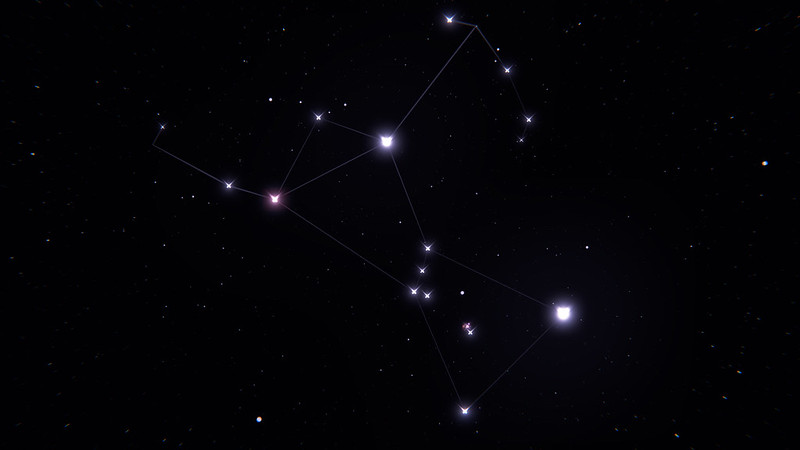
Orion Constellation. by Kevin Gill / FlickrCC
- Orion: One of the most recognizable constellations, Orion the Hunter, boasts several bright stars, including Betelgeuse, Bellatrix, Rigel, and the three stars of Orion’s Belt: Alnitak, Alnilam, and Mintaka.
- Taurus: Adjacent to Orion, this constellation includes the bright star Aldebaran and the Pleiades star cluster.
- Gemini: Castor and Pollux are the two bright stars symbolizing the heads of the twins.
- Leo: This constellation representing a lion has several bright stars, including Regulus.
- Virgo: Spica is the brightest star in this constellation and is easily visible from all three locations.
- Scorpius: Antares is the heart of the scorpion and is a red supergiant star that’s distinctly reddish in the night sky.
- Sagittarius: While this constellation is more southern and is higher in the sky from Nigeria and the southern U.S. than from Egypt, its “teapot” shape is still recognizable from all three.
- Ursa Major: While more prominently visible in the northern hemisphere, parts of this constellation, especially the asterism of the Big Dipper (or Plough), may be glimpsed low on the horizon from northern Nigeria.
- Canis Major: This constellation contains Sirius, the brightest star in the night sky.
- Aries and Pisces: Both these zodiac constellations are also visible across these regions.
- Aquarius: Another zodiac constellation that’s visible from all three regions, especially its brighter stars.
These are just a few of the many constellations and stars visible from Egypt, Nigeria, and the southern U.S. — and knowing that their ancestors and the universe had not completely deserted them, they built a world.
The Environmental Justice Movement
Yet, as time evolved, so did the challenges. From the brutality and rural landscapes of the deep South to the crowded and unjust neighborhoods of our great cities, African Americans faced, and continue to face, environmental injustices. Communities of color often bear the brunt of environmental degradation, be it in the form of polluted air, inaccessible clean water, or proximity to hazardous waste.
The environmental justice movement was started by individuals, primarily people of color, who sought to address the inequity of environmental protection in their communities. Professor Robert Bullard wrote, “Whether by conscious design or institutional neglect, communities of color in urban ghettos, in rural “poverty pockets,” or on economically impoverished Native-American reservations face some of the worst environmental devastations in the nation.”
The Civil Rights Movement of the 1960s sounded the alarm about the public health dangers for their families, their communities, and themselves. African American leaders convened with Indigenous, Latinx, Asian American, Pacific Islander, and international leaders for the First National People of Color Environmental Leadership Summit in 1991 in Washington D. C. They developed the 17 principles of environmental justice, which still serve as a basis for environmental justice organizing today.
The Environmental Justice Movement, at its core, is not just about the land, air, and water. It’s about people. It’s about recognizing that our environment is inextricably linked to our well-being, our culture, and our very identity.
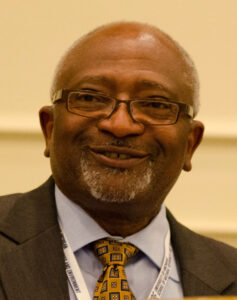
Robert D. Bullard
Pioneers like Dr. Robert Bullard, often hailed as the “father of environmental justice,” laid the foundation, proving that environmental rights are civil rights. They championed the idea that no community, regardless of its racial or socio-economic makeup, should bear a disproportionate share of environmental burdens or be denied its benefits.
As we push forward in this movement, we must always remember and honor the African-American legacy in nature. We must remember the hands that tilled the soils, the voices that sang the spirituals echoing the deep woods’ call, and the leaders who recognized that our fight for equality extends to the very air we breathe and the water we drink.
Let us be mindful of the stories we tell, for they become the world we build. By cultivating narratives that are inclusive, grounded in truth, and forward-looking, we can ensure that the solutions of tomorrow are not just reactions to the problems of today but proactive steps toward a brighter, more harmonious, and diverse future.
The Legacy of Phyllis Wheatley
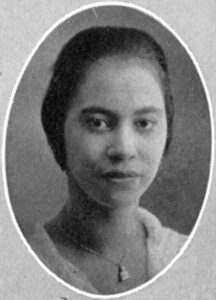 Let me share one last story a little closer to home. Phyllis Wheatley emerged as part of a progressive movement in America to support communities living in a challenge. Between the 1880s and 1920s, hundreds of settlement houses were established in American cities in response to an influx of European immigrants and the urban poverty brought on by industrialization and exploitative labor practices. Settlement houses were organizations that provided support services to the urban poor and European immigrants, often including education, healthcare, childcare, and employment resources.
Let me share one last story a little closer to home. Phyllis Wheatley emerged as part of a progressive movement in America to support communities living in a challenge. Between the 1880s and 1920s, hundreds of settlement houses were established in American cities in response to an influx of European immigrants and the urban poverty brought on by industrialization and exploitative labor practices. Settlement houses were organizations that provided support services to the urban poor and European immigrants, often including education, healthcare, childcare, and employment resources.
Many settlement houses established during this period still thrive today, including the Phyllis Wheatley House, which was focused on supporting the growing African-American community in Minneapolis in the 1920s. We are about to celebrate our 100th year anniversary.
The Legacy of Lake Adney
The other is Lake Adney in Crow Wing County. Minnesotans first began building cabins and visiting Lake Adney in the early 1900s. But, in the 20s, an African American named Charles Gamble bought the south shore of the lake, parceled the land, and began selling it to other black families. As a result, it became one of the few lakes in mostly white northern Minnesota where African Americans felt welcome. They came from all over the country to spend their summers at the cabins and resorts on the lake.
There has always been a Black pursuit of the benefits of building community in nature. It is not a foreign concept that needs to be programmed; it needs to be remembered, and so the story goes.
In accepting this award, I hope to amplify not just my voice but the collective voice of our ancestors, our elders, and the generations to come. Let us continue to intertwine the threads of nature preservation and environmental justice with the rich tapestry of African-American history, ensuring that our legacy is one of strength, unity, and unwavering advocacy for both the planet and the people. In the words of poet David Whyte, “Nature is not a place to visit; it is home.”
Thank you.
News Categories
Recent News
-
Improving the view at Front... May 31, 2024
-
2024 LEGISLATIVE RECAP May 28, 2024
-
State Park track chairs ope... May 24, 2024
-
The Friends of Scandia Park... May 10, 2024
-
Three Friends Groups receiv... April 3, 2024
